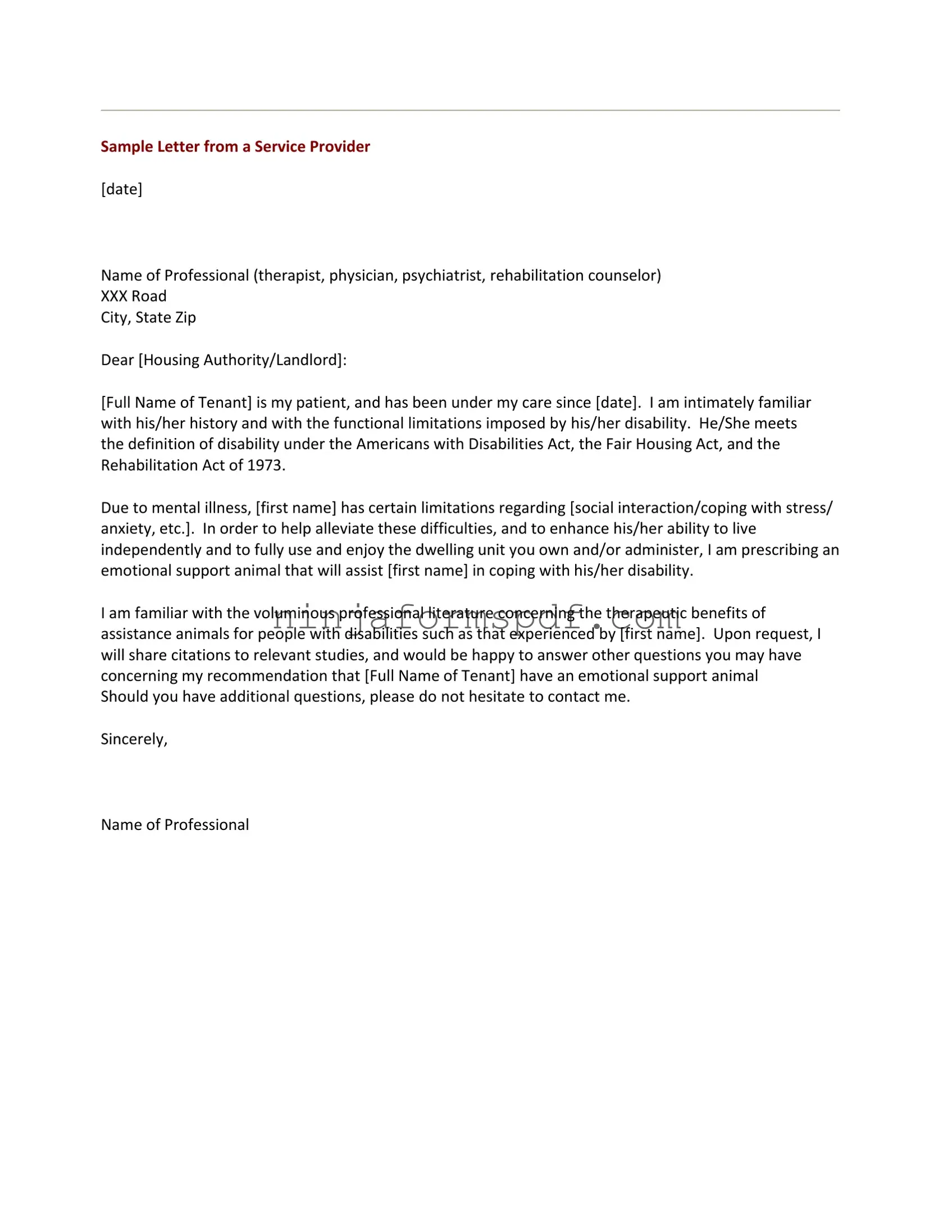The Emotional Support Animal (ESA) Letter form shares similarities with the Doctor's Note for Work. Both serve as official documents, which provide crucial information regarding an individual's condition and the necessity for certain accommodations. The ESA Letter proves the need for an emotional support animal, similar to how a doctor's note can illustrate the medical necessity for workplace adjustments or leave due to health reasons.
Like the Prescription Note from a healthcare provider, the ESA Letter is personalized and issued by a licensed mental health professional. It endorses the therapeutic benefit of the animal's presence to its owner, much as a prescription note specifies medication or treatments essential for a patient's health.
The ESA Letter is akin to a Disability Verification Letter. Both documents affirm the presence of an individual's condition. A Disability Verification Letter is broader, often used to secure various accommodations or benefits, while the ESA Letter specifically supports the need for an emotional support animal as part of treatment or coping mechanisms.
Comparable to the Housing Accommodation Request Letter, the ESA Letter is vital for individuals seeking adjustments in living situations. While the Housing Accommodation Request might cover a range of modifications or exceptions, an ESA Letter requests a specific accommodation: permission for an emotional support animal in residences typically not allowing pets.
The Travel Consent Form, necessary for minors or dependents to travel without their legal guardians, has similarities with the ESA Letter in that it grants special permissions—in the case of the ESA Letter, the right to travel with an emotional support animal on airlines that accommodate such arrangements, emphasizing the necessity of the animal for the individual's emotional or mental well-being during travel.
Analogous to a Service Animal Certification, the ESA Letter verifies the importance of an animal to an individual's health. However, the certification and the letter differ in the kind of support provided; service animals undergo specific training for tasks, while emotional support animals do not require specialized training, offering support primarily through companionship.
The ESA Letter resembles a Therapy Animal Letter, which is provided for animals that participate in therapeutic settings, such as hospitals or schools. The key distinction is the intended use and audience; the ESA Letter supports an individual's need for their animal, whereas Therapy Animal Letters validate the animal's presence in therapeutic programs or sessions for multiple individuals.
Similarly, the ESA Letter can be compared to a Patient Care Plan often found in medical and mental health care settings. While a Care Plan outlines a comprehensive approach for managing a patient's overall health, including treatment goals and strategies, the ESA Letter focuses on the aspect of managing emotional or mental health conditions through the companionship of an animal.
The Reasonable Accommodation Letter, used to request modifications or adjustments in the workplace for employees with disabilities, also shares common ground with the ESA Letter. Both aim to secure necessary changes to support the individual's condition—be it through physical alterations in the work environment or through the support of an emotional support animal.
Lastly, the ESA Letter parallels the Medical Certificate for travel. Airlines often require this document for passengers traveling with medical conditions or special needs, including the need to fly with an emotional support animal. Both documents serve to communicate the requirements of individuals with health-related issues to entities, ensuring their needs are met during travel.

